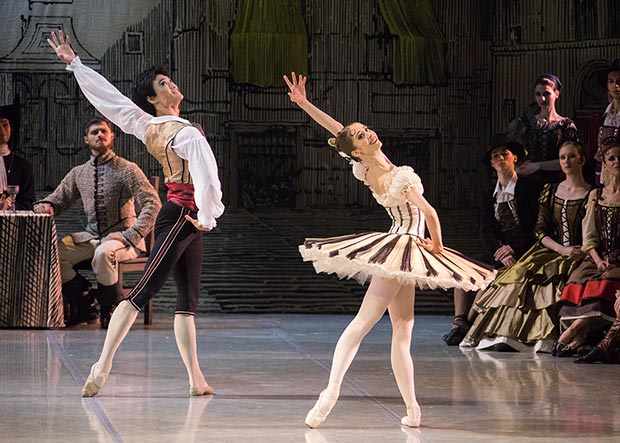
© M Logvinov. (Click image for larger version)
Yacobson Ballet
Don Quixote
★★★★✰
St. Petersburg, Alexandrinsky Theatre
19 December 2017
www.yacobsonballet.ru
There are many ballets with which Johan Kobborg may be especially associated – La Sylphide, Giselle, Onegin, Mayerling are such examples – but, ordinarily, Don Quixote would be nowhere near that list. Kobborg has established a reputation for his staging of La Sylphide – notably at Covent Garden and the Bolshoi – and he was developing a strong track record for revitalising an expanded repertoire at the Romanian National Ballet before his scandalous dismissal from the role, last year. It’s a mighty understatement to suggest that this awful experience hit him hard, evidenced by a virtual hibernation from the world of ballet over much of the past eighteen months.

© M Logvinov. (Click image for larger version)
Surprising though it may be for the self-proclaimed knight of La Mancha to have inspired Kobborg’s return to ballet, his new production of Don Quixote for the Yacobson Ballet of St Petersburg continues the ongoing testimony to the strength of his creative vision. Kobborg has deconstructed the work; mixing up the narrative’s building blocks before reassembling them in a masterpiece of balance that remains recognisably traditional but is also refreshingly new.
In particular, he adds a prologue in the household of Miguel de Cervantes. The author is suffering writers’ block and this lack of literary output is threatening his financial survival. As servants and workmen pack away his belongings for the auction house, the author begins to analyse their character traits and interactions, sparking his inspiration to write again. In a plotline not unlike The Wizard of Oz, these personalities of his domestic situation become characters in the new story. The conceit in this dramatic device is the small matter of the ballet narrative bearing only a fleeting reference to incidents in the first volume of Cervantes’ eponymous novel but that’s a minor consideration.
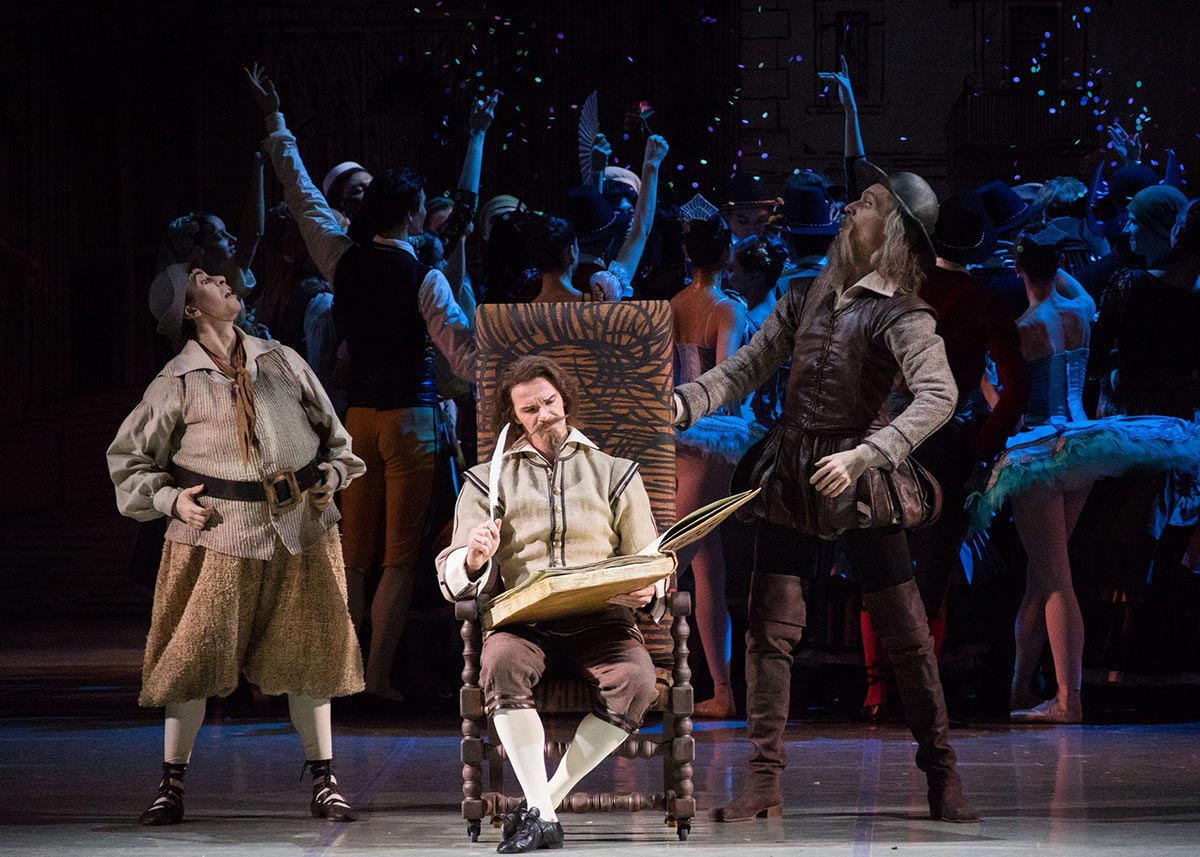
© M Logvinov. (Click image for larger version)
The St. Petersburg State Academic Leonid Yacobson Ballet Theatre (hereinafter referred to as Yacobson Ballet) was founded more than fifty years’ ago by the Russian choreographer honoured in its title (although the right to bear its founder’s name didn’t come until early in the noughties). Yacobson was, in many ways, a successor to the creative expressionism of Michel Fokine, eschewing linear narrative in an attempt to give each production its own unique character. He was a role model for the next generation of Russian choreographers, notably Boris Eifman who declares Yacobson to have been his mentor. Yacobson’s work was mostly carried out under intense scrutiny from the Soviet censorship committees and much of it ended up on the cutting-room floor but a diverse output survives within the repertoire of the Yacobson Ballet, now under the directorship of former Mariinsky principal dancer, Andrian Fadeev, since 2011.

© M Logvinov. (Click image for larger version)
Fadeev’s entreaty to make a new production of Don Quixote, based upon the Petipa original, was the spur to bring Kobborg back to active service; and the subsequent choice of Jérôme Kaplan as designer ensured fascinating visual imagery. With a prolific repertoire of ballet designs in his portfolio, unsurprisingly, Kaplan had previous experience of Don Quixote, having designed Alexei Ratmansky’s production for Dutch National Ballet. In his second iteration of the same ballet, Kaplan has been inspired directly by the engravings of Gustave Doré that illustrate early editions of the novels. Kaplan’s black and white line drawings of the buildings in A Square in Barcelona, for example, are beautifully evocative of the romanticised seventeenth-century setting. Since Yacobson Ballet does not have the luxury of a “home” theatre, Kaplan’s sets also satisfy the essential requirements of portability and flexibility in terms of variable stage dimensions.
While act 1 is largely traditional, Kobborg has significantly refurbished the second act, albeit retaining the three-scene structure of Tavern, Gypsy Camp and Don Quixote’s vision. Amongst several absentees are the windmill and no reference to Dulcinea (the usual reason for Don Quixote’s sallies). Instead of falling from the windmill, the Don’s vision is a matter of honour; inspired as a daydream, reacting to his disappointment at others’ lack of desire to help the lovers (Basilio and Kitri) escape.
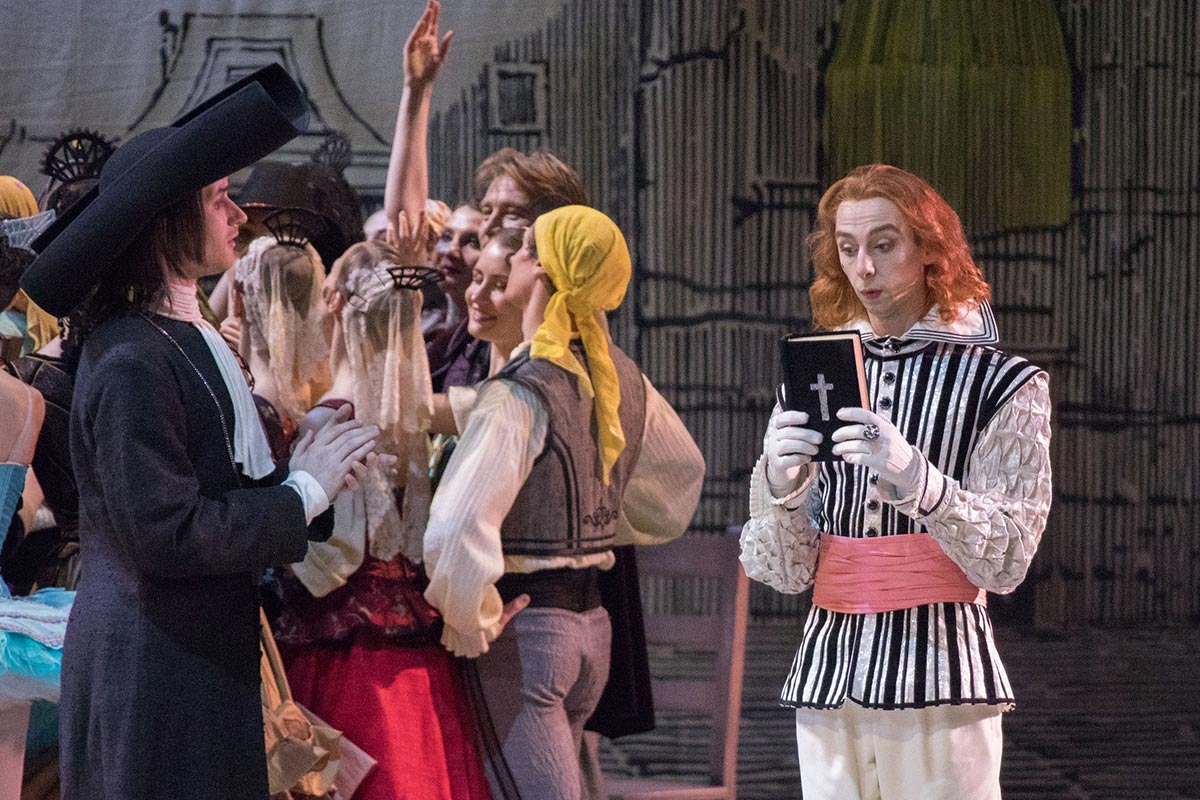
© M Logvinov. (Click image for larger version)
Across the whole ballet, Kobborg enhances various soloist roles beyond their normal calling cards. Sancho Panza is much more evident than simply being tossed in the air from a blanket “trampoline” (one of few direct literary references), and given added comedic character, which is handled ebulliently by a well-padded Leonid Khrapunsky. Tasman Davids also gives a charismatic portrayal of the hapless Gamache, Kitri’s cowardly but wealthy suitor, who – in Kobborg’s interpretation – owns the local bull-ring, thus providing logic for the presence of so many matadors. Khrapunsky and Davids give an amusing cameo of a comedy double-act that continues into the curtain call. Sergey Davydov was a suitably tall and willowy Don Quixote – armed with a spear (more like a harpoon) rather than the traditional lance – but for my money, even the considerable make-up could not conceal the inescapable fact that he appeared too youthful for the role. Grigory Ivanov was an excellent comedy villain as Lorenzo, the Innkeeper. As Espada, the Toreador, Stepan Dyomin danced well but struggled to make his presence felt amongst the Catalan crowd.

© M Logvinov. (Click image for larger version)
The plethora of soloist dancing roles showed some depth in the Yacobson company strength, notably amongst the female cohort. The gypsy leads (Santa Kachanova, Angelina Grigoryeva and Ekaterina Gusarova) were a trio of back-bending phenomena; and petite Olga Mikhailova gave an ideal portrait of Amore/Cupid. Excepting the guest star (more of whom anon), perhaps the strongest technique came from Svetlana Svinko as Mercedes, the Street Dancer. She combined a notable variety of skills, from splendid Italian fouettés to fluid footwork, steely balances and fast pirouettes; but more especially Svinko stole scenes with her captivating charisma and fiery bravura. Her eyes told the story as much as her excellent movement.
Sofia Matyushenskaya – a former winner of the Benois de la Danse – danced the role of Kitri with precision, musicality and flair; but, too demurely. The passion that burned through Svinko’s performance was much less evident in this interpretation of Kitri. Matyushenskaya is a delightful dancer but the fiery Spanish maiden did not appear to suit her style, although she certainly improved as the acts progressed and both her comedic mock-drama reaction to Basilio’s faked suicide and her outstanding variation in the grand pas de deux were worthy of acclaim.
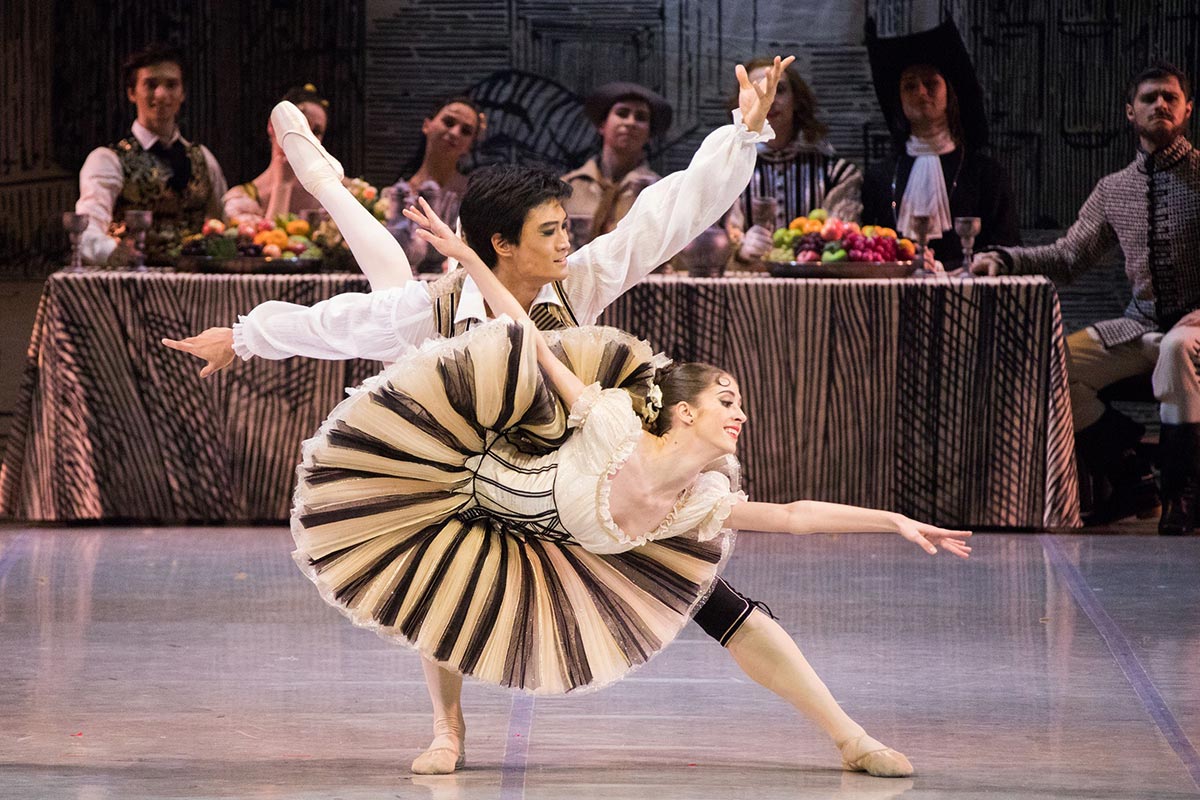
© M Logvinov. (Click image for larger version)
Her Basilio was drafted in from the Mariinsky, in the form of fast-emerging virtuoso giant, Kimin Kim. The Mariinsky’s tall Korean principal dancer is well-suited to the technical challenges for Basilio (all of which are left well alone in Kobborg’s staging) and by-and-large he weathered them well, notably in the grand pas de deux, drawing deep-bass, bellowing cries of “Bravo” from the audience throughout his variation, leaping high with notable ballon (appearing momentarily to hover at the vertex of his jump) and spinning with disciplined, yet aggressive speed. Occasionally, in the earlier acts, Kim’s sense of adventure strayed into overcooking a move, which led to an undisciplined off-balance ending but it was worth these risks to see him fly. The final pas de deux was a triumph for both Kim and Matyushenskaya.
The ballet concludes, as it began, with the briefest of epilogues in which the character of Cervantes (Artyom Pykhachov) is found finishing his manuscript with a flourish of the quill before the servant we have seen transform into Cupid (Mikhailova) creeps in to reveal the title on the front of the giant book.
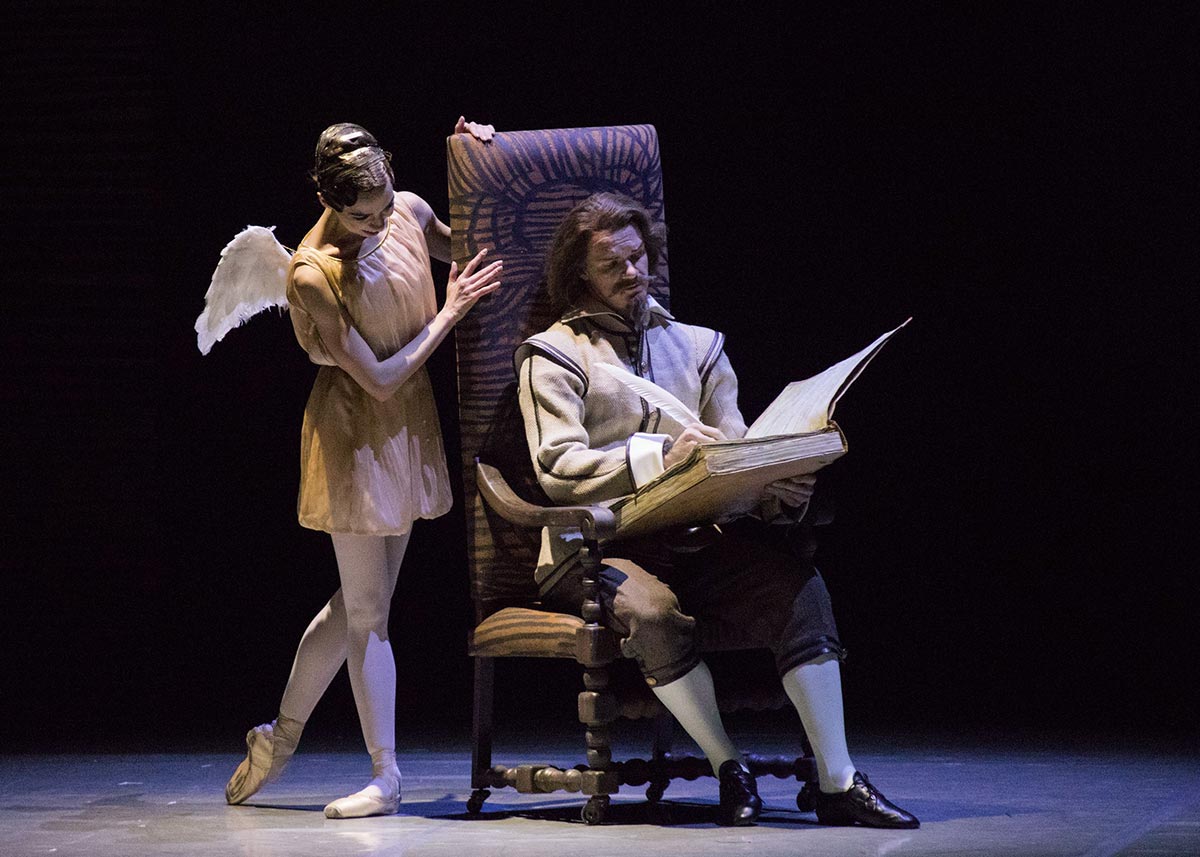
© M Logvinov. (Click image for larger version)
Kobborg’s act 3 revelation was an outstanding ensemble fandango dance to open the celebrations of the wedding feast, which honoured Petipa’s distant memories of dancing in Madrid, some twenty-five years before he choreographed Don Quixote, in St Petersburg, by bringing a distinct flavour of Spain to his proceedings. Like Petipa, Kobborg (a Dane who resides in London) has no Hispanic heritage from which to conjure a vision of Spain through an essence of its greatest literary work; nonetheless, his staging of Don Quixote improves upon The Royal Ballet’s comparatively recent production by Carlos Acosta (the unevenness of the comparison is most significant in the contrasting designs).
Throughout my continuing enjoyment of this excellent dance theatre the thought nagged away that it would be a stellar acquisition for English National Ballet, following on from Le Corsaire, to provide an excellent roster of soloist opportunities for both dance and comedy theatre. That’s my New Year wish!
Note: The author’s travel and accommodation expenses were met by the St Petersburg State Academic Leonid Yacobson Ballet Theatre.












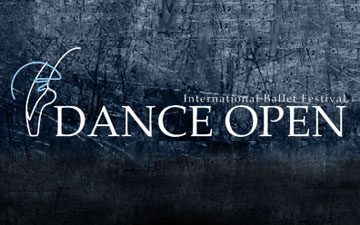

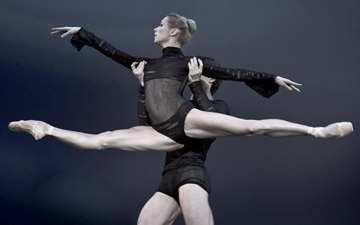

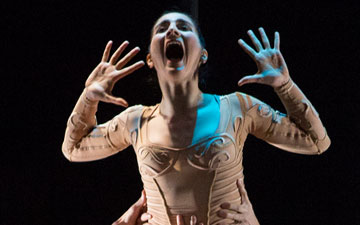
You must be logged in to post a comment.